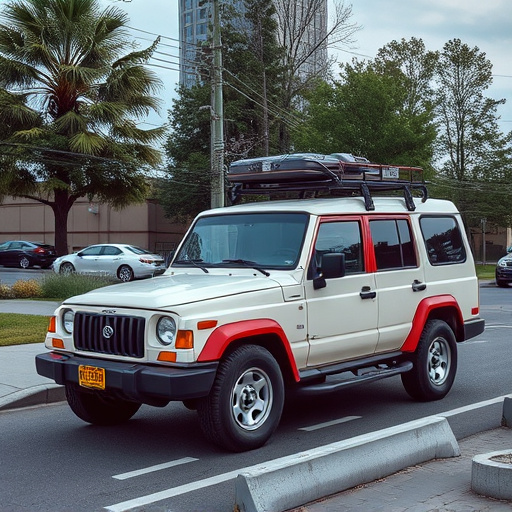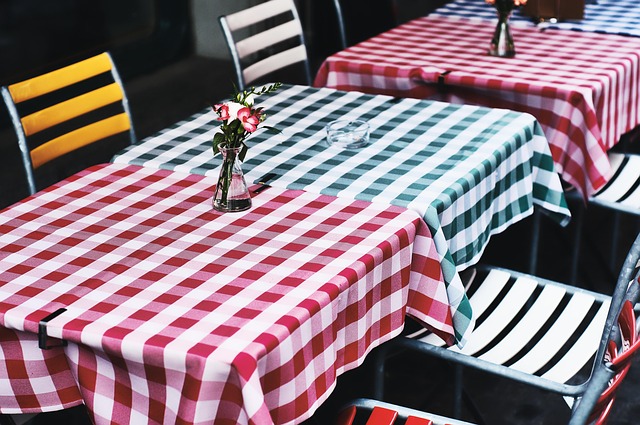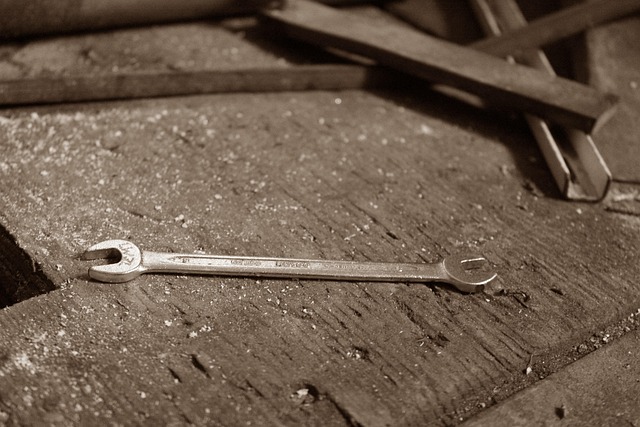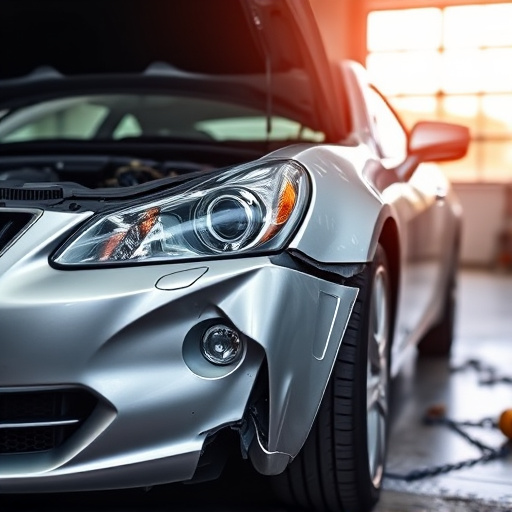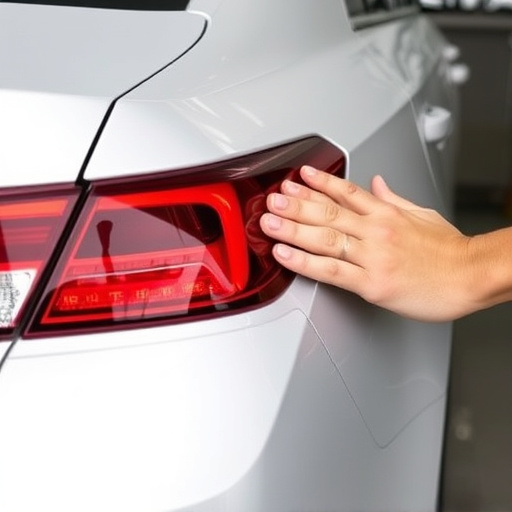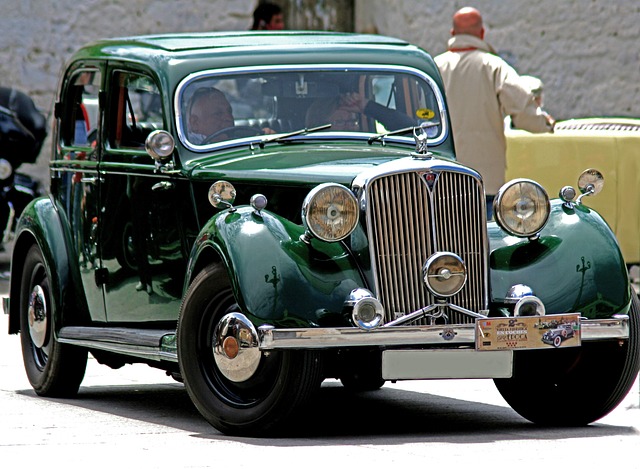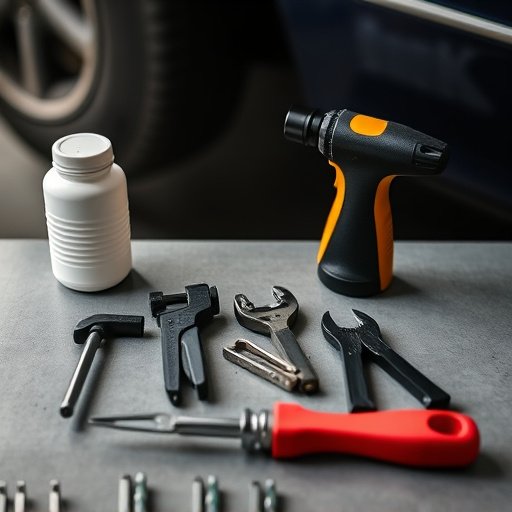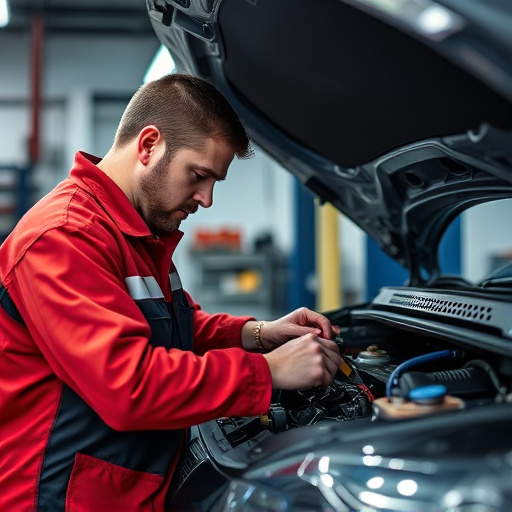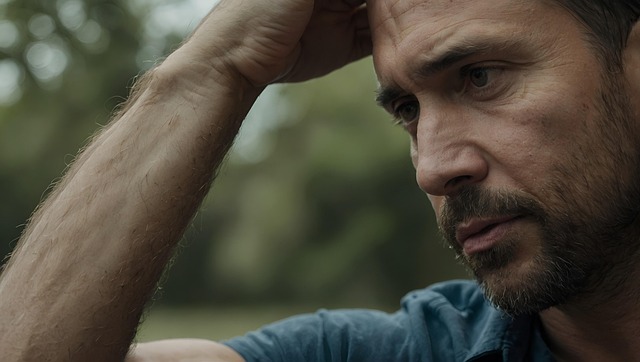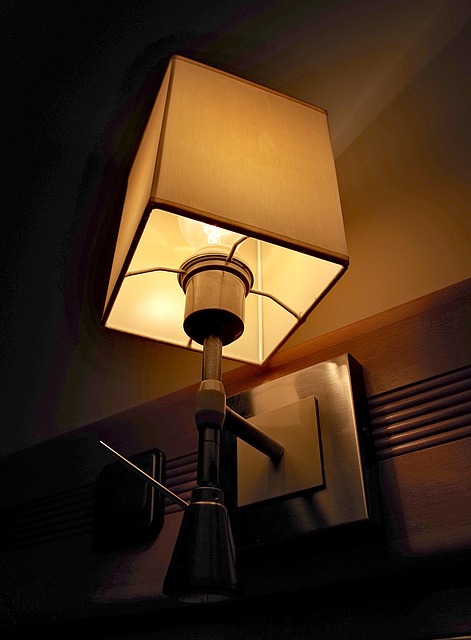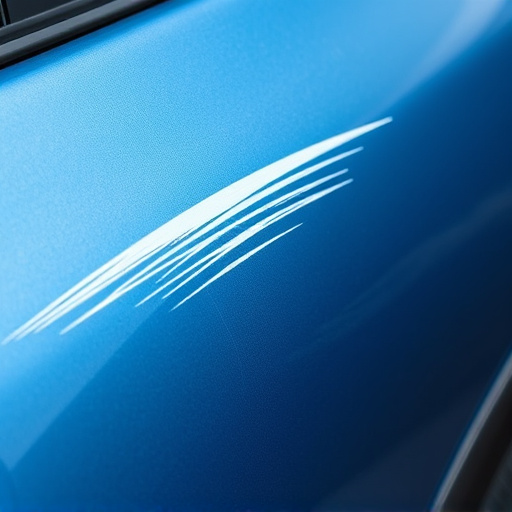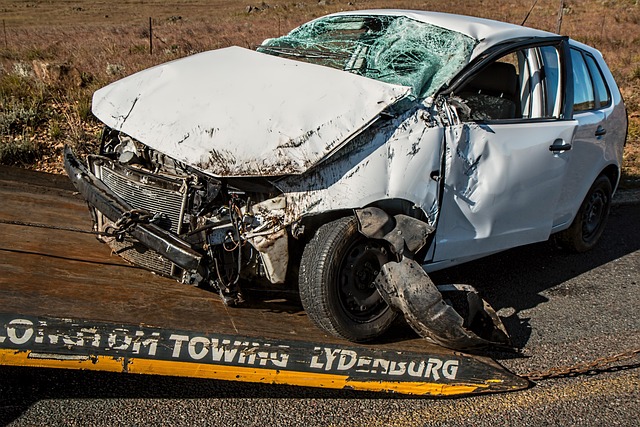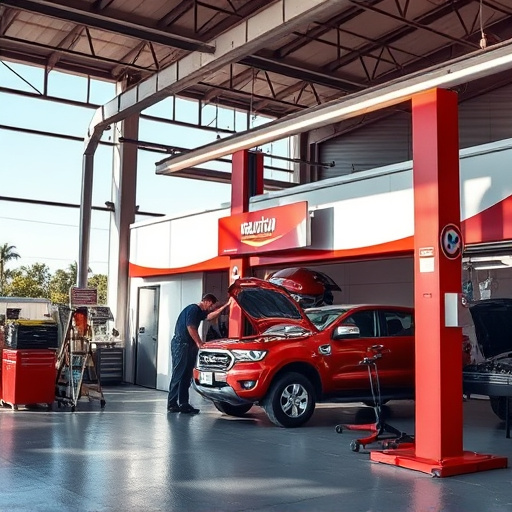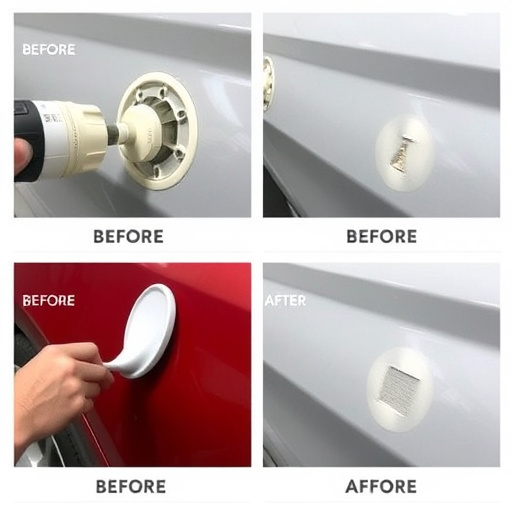Tesla PPF (paint protection film) repair requires meticulous attention to detail, including thorough inspection, proper surface preparation with cleaning and decontamination, precise removal of damaged film, repair/replacement of affected areas, and final inspection for seamless integration with vehicle's exterior. Clean surface prep is crucial for long-lasting, visually satisfying results. Proper techniques and expertise from specialized shops prevent bubbles, gaps, and ensure factory-like finish protection against scratches and chips.
Tesla’s Paint Protection Film (PPF) is a popular choice for vehicle owners seeking to safeguard their paintwork. However, proper repair techniques are crucial for maintaining its effectiveness. This article guides you through the essential steps of Tesla PPF repair, emphasizing the importance of surface preparation. We’ll explore proven techniques, common pitfalls to steer clear of, and offer insights to ensure optimal results. By following these tips, you can restore your Tesla’s PPF to its original condition.
- Understanding Tesla PPF Repair Process
- Surface Preparation Techniques for Optimal Results
- Common Mistakes to Avoid During Repair
Understanding Tesla PPF Repair Process
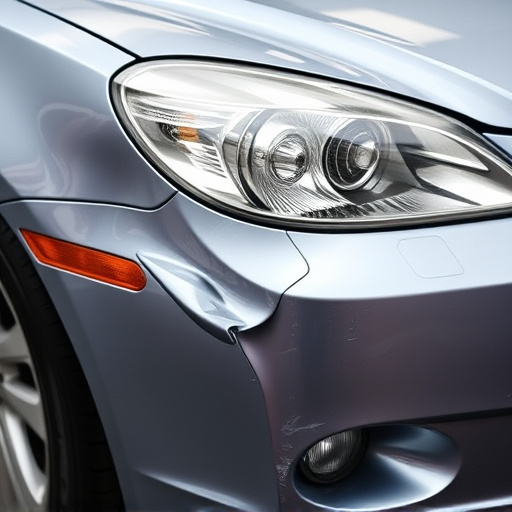
Understanding Tesla PPF Repair Process
Tesla Paint Protection Film (PPF) repair is a specialized procedure that requires meticulous attention to detail. The process begins with thoroughly inspecting the damaged area, which could include chips, cracks, or scratches on the film or the underlying paint. This initial step is crucial as it determines the extent of the repair needed. In many cases, Tesla PPF repairs involve replacing the damaged sections of the film rather than applying a new layer over the entire vehicle, making it an efficient and cost-effective solution for autobody repairs.
After the surface preparation, which involves cleaning and decontaminating the area to ensure optimal adhesion, technicians use precision tools to carefully remove the damaged PPF. The next phase is repairing or replacing the affected sections of the car body, often involving advanced techniques and materials. Once the repair is complete, a final inspection ensures that the restored area matches the original factory finish, providing seamless integration with the rest of the vehicle’s exterior. For those seeking top-notch vehicle repair services or car body restoration, Tesla PPF repairs highlight the importance of clean surface preparation for achieving long-lasting and visually satisfying results.
Surface Preparation Techniques for Optimal Results
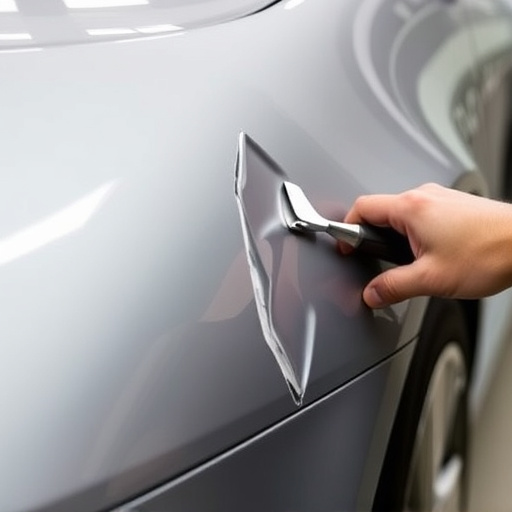
For optimal results in Tesla PPF (paint protection film) repair, proper surface preparation is key. Before attempting any repairs, it’s crucial to thoroughly clean and decontaminate the affected area. This involves using specialized automotive cleaning solutions to remove dirt, grease, and other contaminants that can hinder adhesion. Scratches and debris should also be addressed to ensure a smooth base for the repair process.
The next step in surface preparation is using fine-grit sandpaper to gently buff the area, creating a rough texture that allows the PPF to bond effectively. This process, known as abrading, helps create a strong mechanical bond between the film and the vehicle’s paintwork. After sanding, a decontaminant or primer specific to automotive applications should be applied to neutralize any remaining acids and ensure long-lasting adhesion for both repair and subsequent installation of new PPF. This meticulous preparation is what sets apart professional luxury vehicle repair services in the automotive collision repair industry.
Common Mistakes to Avoid During Repair
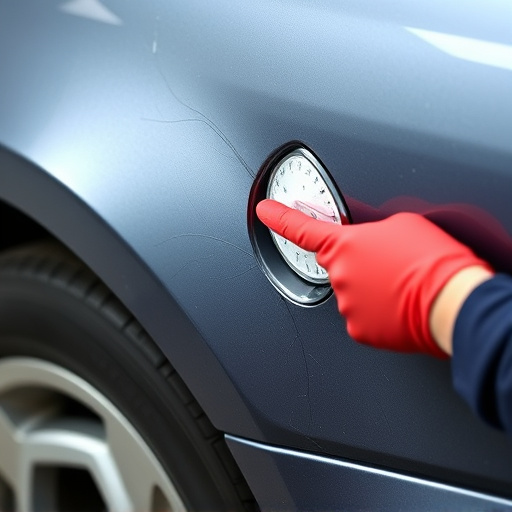
When attempting Tesla PPF (paint protection film) repair, it’s crucial to steer clear of a few common pitfalls that can compromise the final result. One of the most frequent mistakes is failing to properly prepare the surface. PPF repairs demand an impeccably clean and decontaminated area to ensure the new film adheres seamlessly. Skipping this step often leads to bubbles, gaps, or uneven application.
Another blunder to avoid is using subpar tools or imprecise techniques. Inaccurate cuts or improper removal of the old film can result in damage to the underlying paint. Relying on a seasoned auto repair shop or vehicle body shop with expertise in PPF repairs is key to steering clear of these issues and achieving a factory-like finish that protects your Tesla’s exterior from scratches, chips, and other dent removals.
When it comes to repairing Tesla’s Paint Protection Film (PPF), proper surface preparation is key to achieving optimal results. By understanding the repair process, employing effective cleaning techniques, and steering clear of common mistakes, you can ensure your PPF looks as good as new. Remember, a clean and prepared surface is the foundation for any successful Tesla PPF repair job.
